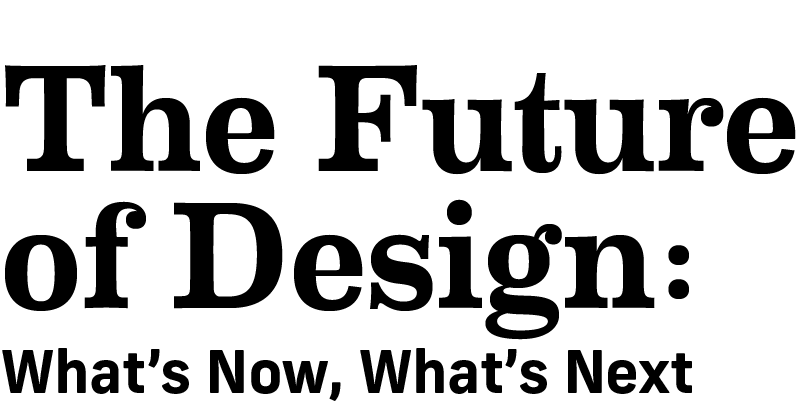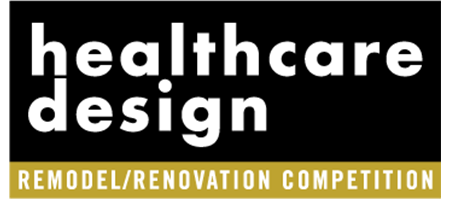As part of Healthcare Design magazine’s 25th anniversary, we invited industry leaders to reflect on some of the key milestones that have shaped modern healthcare facilities. Here, Kim Shinn, principal and senior sustainability wizard, TLC Engineering Solutions (Nashville, Tenn.) talks about the evolution of sustainable design.

(Headshot credit: Courtesy of TLC Engineering Solutions)
In 1996, environmental activist Gary Cohen co-founded Health Care Without Harm, following an Environmental Protection Agency (EPA) finding that hospitals were a leading cause of dioxin and mercury pollution from the incineration of medical waste and the disposal of mercury-containing medical devices such as thermometers and sphygmomanometers. Cohen recognized the conflict between healthcare’s mission to “first, do no harm” and its role in producing toxic chemicals. He went on to help found Practice Greenhealth, a membership organization for hospitals committed to greening the healthcare sector, and the CleanMed conference.
This idea of reducing—and ultimately eliminating—the toxicity of building materials was one of the earliest inspirations for the green building movement. It also gave sustainable healthcare design its north star.
In the summer of 2001, Wayne Klingelsmith, incoming president of the American Society of Healthcare Engineering (ASHE) and then system director of plant operations at Lee Memorial Health System (Fort Myers, Fla.), joined ASHE Executive Director Al Sunseri to convene a group of healthcare operators, designers, and consultants with an interest in environmentalism and green buildings.
This group, including Gail Vittori, co-founder of the Center for Maximum Building Performance; Robin Guenther, principal of Guenther 5 Architects and later with Perkins + Will; Tom Lent, policy director of the Healthy Building Network; Pier-George Zanoni, facility engineering specialist for the State of Michigan; Tracey Easthope, director of the Environmental Health Project at the Ecology Center; and myself, created the ASHE Green Healthcare Construction Guidance Statement. The monograph was intended to help guide directors of hospital facility operations in identifying opportunities for alternative material choices, as well as understanding the environmental impacts of energy and water consumption of healthcare facilities.
This group created the ASHE Green Healthcare Construction Guidance Statement to help guide directors of hospital facility operations in identifying opportunities for alternative material choices, as well as understanding the environmental impacts of energy and water consumption of healthcare facilities.
Going beyond LEED in sustainable healthcare design
In the 2000s, the U.S. Green Building Council’s (USGBC) LEED program also began to take hold as guidance for green building practice. At the time, healthcare designers recognized that while LEED had high application to commercial office and education buildings, it failed to address some of the unique challenges of healthcare design, especially with respect to issues of code requirements for patient and staff safety and infection control, as well as the emphasis on housekeeping and cleanliness.
To address these concerns, industry leaders including Gail Vittori, co-founder of the Center for Maximum Potential Building Systems, and Robin Guenther, principal of Guenther 5 Architects and later with Perkins + Will, along with Walt Vernon, CEO of Mazzetti, established the Green Guide for Health Care. This voluntary program aimed to help healthcare designers better identify and quantify the environmental impacts of their choices on three different but interconnected sets of stakeholders: the people who own, occupy and use healthcare buildings; the communities that host these buildings; and the wider planetary environment affected by the buildings, especially with respect to water and energy use. In certain locations, such as the State of Massachusetts, the Green Guide even approached the status of regulatory requirements for licensed healthcare building design and construction practice.
Introduction of LEED for Healthcare
The USGBC recognized that some owners of licensed healthcare facilities wanted to achieve recognition under LEED but needed the rating system to adapt to accommodate the special requirements and needs of their buildings.
USGBC worked with many of the Green Guide for Health Care volunteers to develop an application guide that could be used by USGBC (and the Green Building Certification Institute) to formally recognize and rate these buildings under the LEED rating system. The result: LEED for Healthcare was published as part of the LEED v2009 update and reframed the intent for each prerequisite and credit to address the three identified stakeholder groups.
LEED for Healthcare also made integrated project planning and design, a mandatory prerequisite, rather than an optional credit as is previous LEED rating system applications. In the LEED for Healthcare rating system, this innovation prerequisite’s intent was “to maximize opportunities for integrated, cost-effective adoption of green design and construction strategies, emphasizing human health as a fundamental evaluative criterion for building design, construction, and operational strategies.”
Points for the other credits in the rating system were reallocated to put greater emphasis on material health impacts, indoor environmental quality, and water and energy conservation.
Future of the sustainable healthcare design movement
From its start, the sustainable healthcare design movement has emphasized the need for better, healthier, and safer material choices—not only for when those materials are in use, but also their impact during manufacturing and in their end-of-life disposition.
Disclosure and quantification of these impacts is being widely adopted in the form of environmental and health product declarations (EPDs and HPDs) that many designers and specifiers now require in their commitment to material selection. In less than a single generation, the prevalence of volatile organic compounds in finishes has gone from ubiquitous to nearly nonexistent. Endocrine disruptors, such as phthalates, are almost entirely gone from the acceptable material palettes of many healthcare organizations.
Green building’s emphasis on healthier indoor environmental quality has a natural partner with the licensed healthcare building industry. For example, the experience with the COVID-19 pandemic demonstrated that, with healthcare design practice’s emphasis on air filtration, air change rates, and detection of indoor pollutants, licensed healthcare occupancies experienced very low nosocomial infection rates during the pandemic, providing evidence to other building types of the efficacy of these practices.
How can the healthcare sector target carbon emissions?
The next great challenge for sustainable healthcare design is to reduce the greenhouse gas emissions (often expressed as carbon dioxide equivalents, or more colloquially as simply “carbon”) associated with healthcare building design, construction, and operation.
Of particular interest is the emphasis on the reduction of the emissions associated with extracting, manufacturing, and transporting the materials of construction, and building the facility, sometimes called “upfront” or “embodied” carbon.
The climate-changing impacts of these greenhouse gas emissions are already affecting the atmosphere before the building even begins its operations. This means looking at strategies to select materials with comparatively lower embodied carbon, as well as giving greater emphasis to the adaptive reuse of existing structures, thus saving huge amounts of greenhouse gas emissions rather than constructing new foundations, superstructure, and enclosures.
Kim Shinn is principal and senior sustainability wizard at TLC Engineering Solutions (Nashville, Tenn.) and can be reached at [email protected].
For more design trend insights from Healthcare Design’s 25th anniversary issue, go here.












